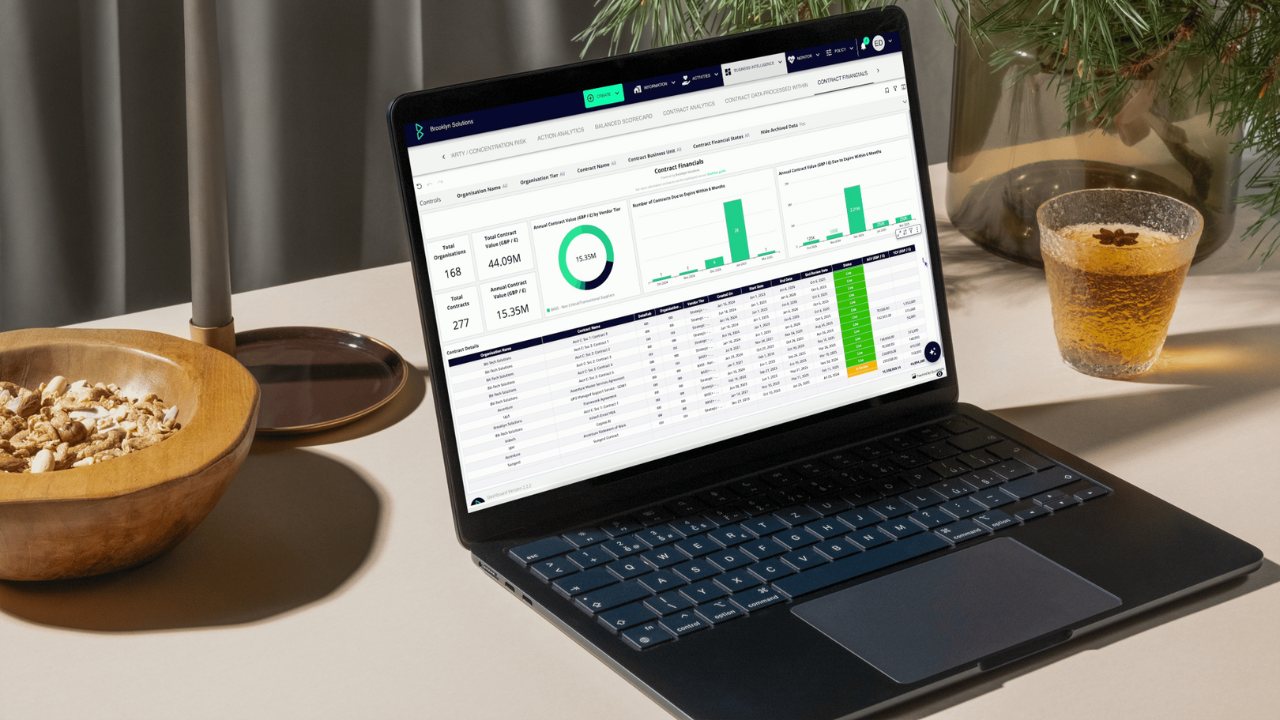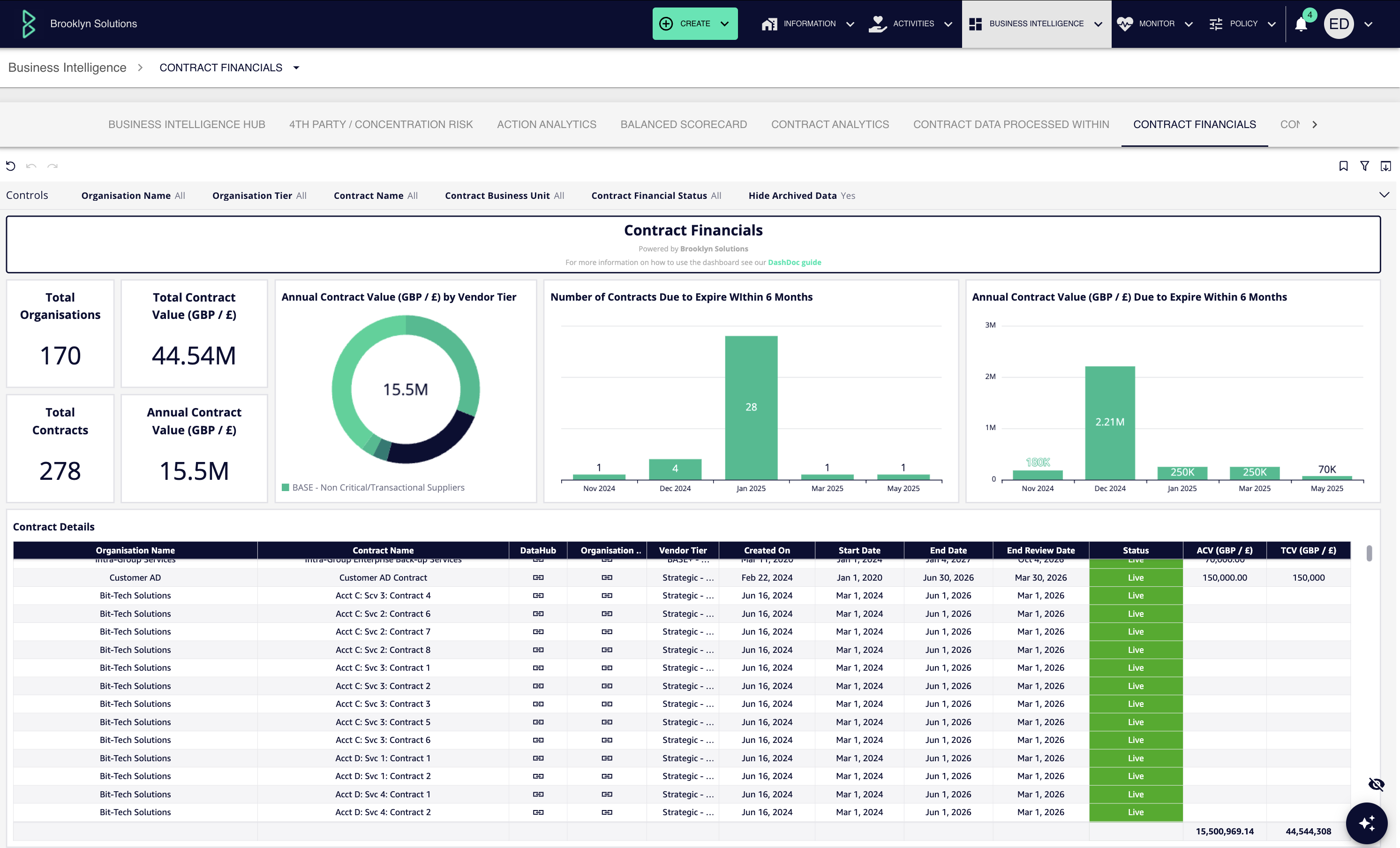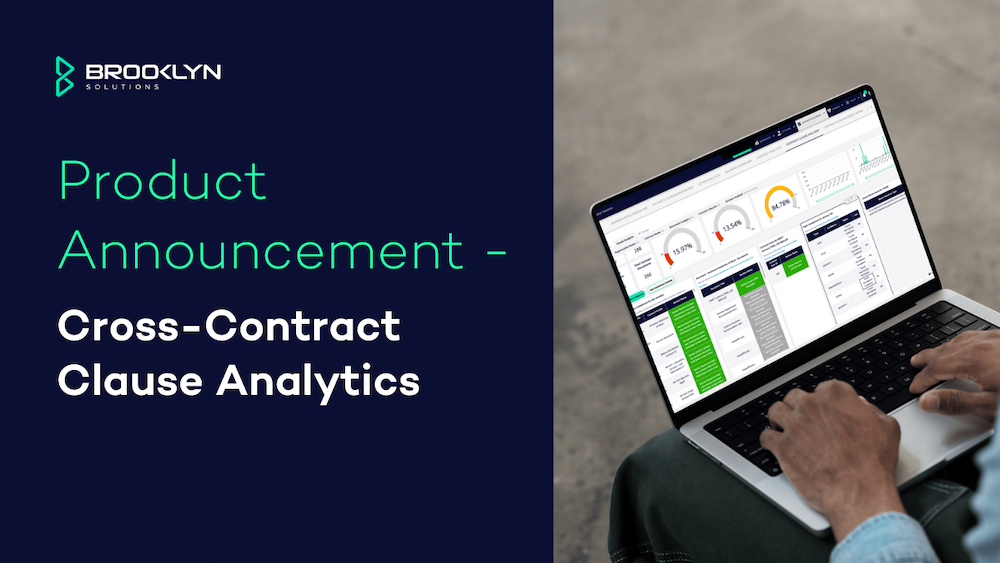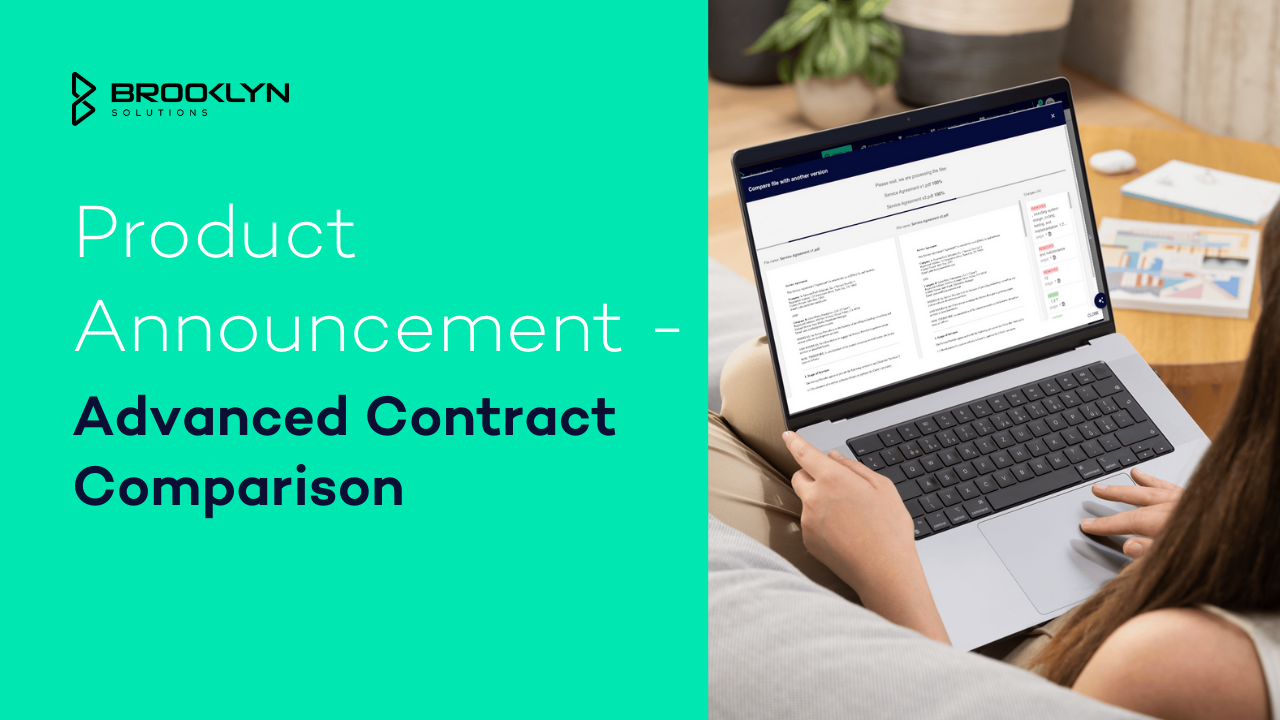Are Dashboards a Game Changer for SRM Teams?
Vendor Dashboards can be an invaluable resource for any organisation looking to optimise its contract management process. A well-designed contract financial dashboard offers a clear, real-time view of crucial contract data. Empowering organisations to make informed decisions quickly. By consolidating supplier and contract information in one place, you eliminate data silos, enhance visibility, and drive strategic action. What are the key components in a Contract Financials Dashboard? a masterpiece, that you will use day in and day out. Here are 5 essential elements you need in your Vendor Dashboard.
Snapshot of Key Contract Items
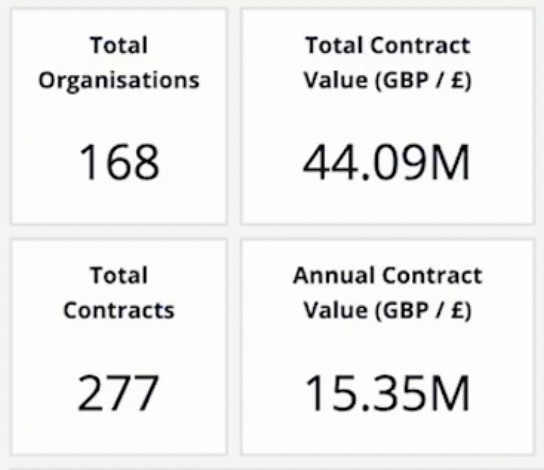
A good contract financial dashboard offers a powerful snapshot of the core contract metrics across your suppliers. This overview should include high-level figures that reveal how many suppliers are in your network. Also the total number of contracts under management.
Beyond supplier count, the financial view is equally crucial. Displaying Total Contract Value (TCV) and Annual Contract Value (ACV) in a concise snapshot provides a complete picture of your financial commitments. This helps to monitor budgets and contract values effectively.
List of Organisational Contracts

Many organisations face the challenge of managing data across multiple systems. This makes it difficult to see the full picture of their supply chain. By featuring a list of all contracts in one place, you can dramatically increase contract visibility. This report should include essential details like vendor tiering, contract start and renewal dates, and financial records. Additionally the current contract status—whether it’s active, under review, or expired.
Adding direct links to contract documents, supplier information, and recent engagement records, allows for seamless navigation and easy access to critical data.
Pro Tip: If managing data feels overwhelming, a comprehensive report can reveal data gaps and offer a complete overview of your supply chain. This will make it easier to act strategically.
Annual Contract Value Broken Down by Vendor Tiers
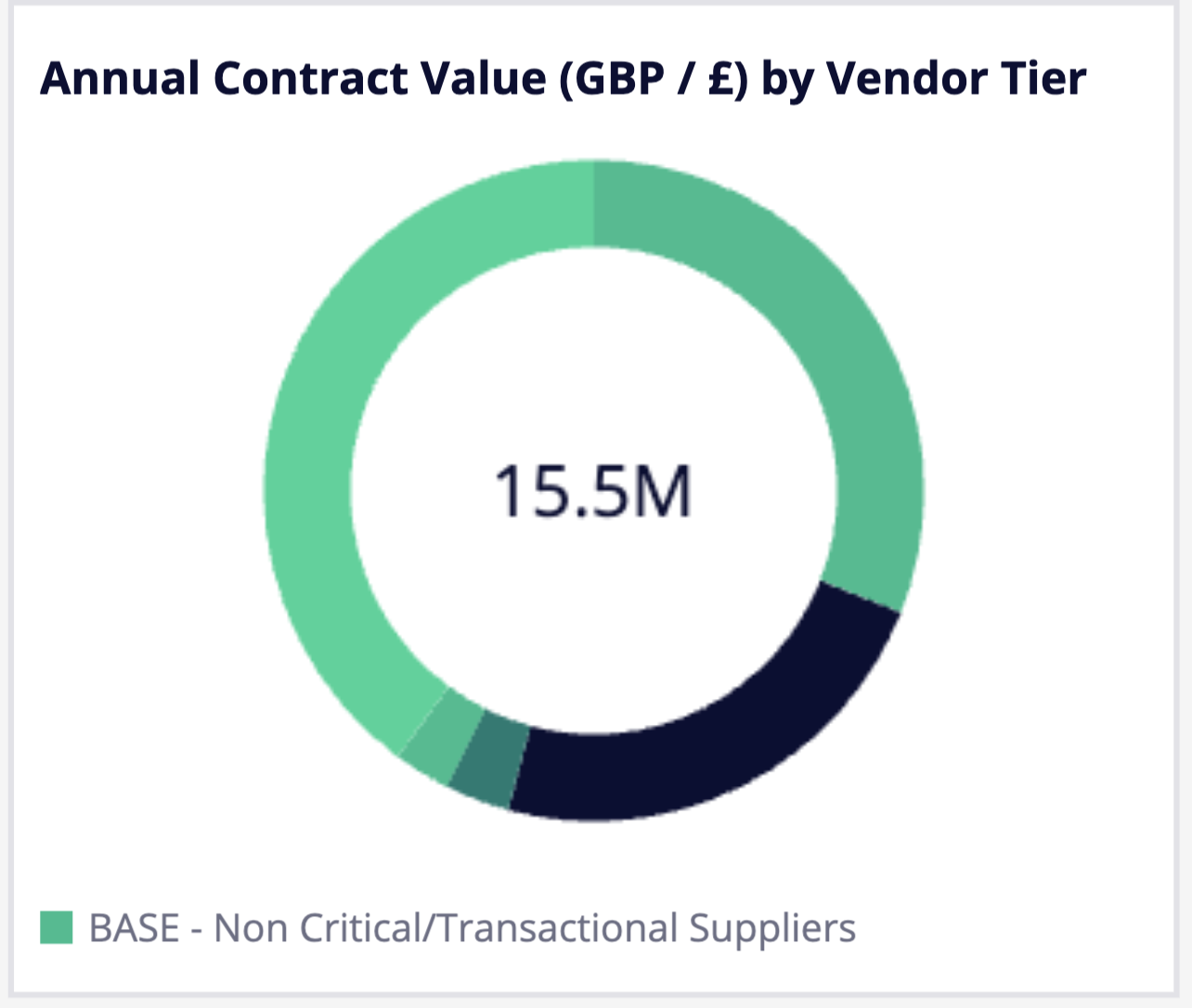
Segmenting your Annual Contract Value (ACV) by vendor tiers is a strategic move to focus on the most critical suppliers. Breaking down ACV by categories; critical, non-critical, or transactional vendors, provides insights into where resources are concentrated. It also demonstrates to executives why certain vendors warrant particular attention.
In light of recent regulations in the UK and Europe, (PRA, EBA and DORA Outsourcing regulations), demonstrating segmentation is essential for compliance. A visually appealing dashboard makes it easy to showcase compliance efforts in a streamlined and effective manner.
Are you looking for a GRC solution to support the ever-changing regulations?
Contracts by Renewal Dates
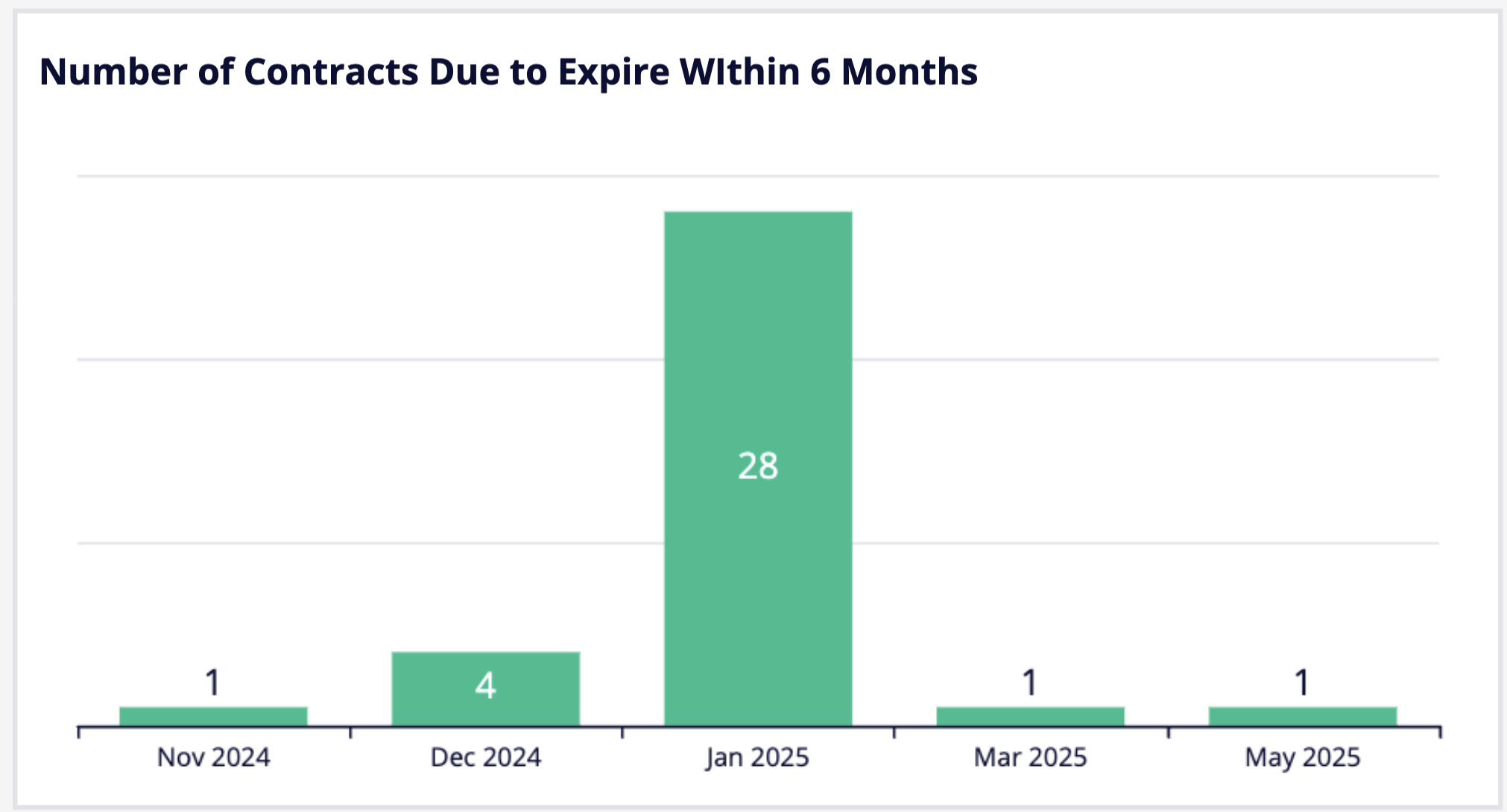
Supplier Relationship Management (SRM) teams often face the challenge of limited capacity when managing their supply chain. A vendor dashboard highlighting upcoming contract renewals empowers SRM teams to be proactive. Dashboards ensure that the Supplier Relationship Management team is prepared for renewals and can allocate resources efficiently.
Other Data To Consider
The possibilities for tracking are endless when you have the data. Consider adding financial risk indicators, vendor performance metrics, and more. Vendor Dashboards not only consolidate siloed data, they can also improve visual clarity, fostering quick, strategic decision-making. Dashboards become a visual asset in executive meetings, presenting critical contract and financial information in a clear, actionable, data-driven manner.
Making Dashboards a Game Changer
Within the Brooklyn platform, our Vendor Dashboards are designed to be interactive. Ensuring that you have access to up-to-date, centralised data whenever you need it. Use these dynamic dashboards to dive deep into supplier tiers, view live data, and review the latest supplier interactions.
At Brooklyn, we make data work for you. Our dedicated team creates Custom Vendor Dashboards that transform your data into actionable insights. Helping SRM to make informed decisions and drive business growth.

